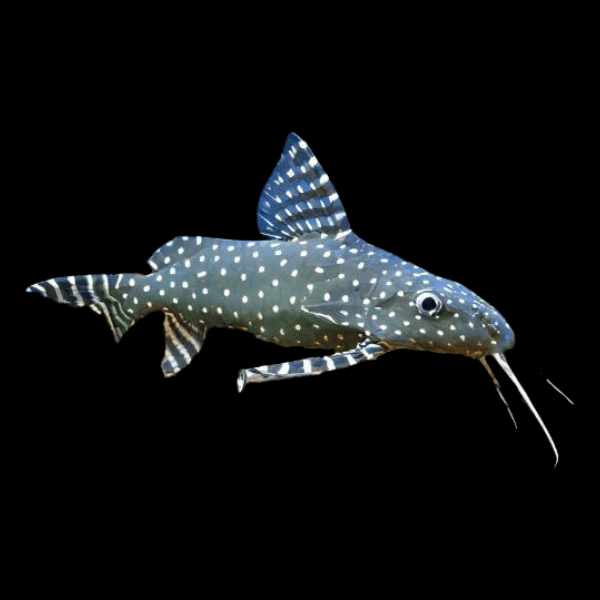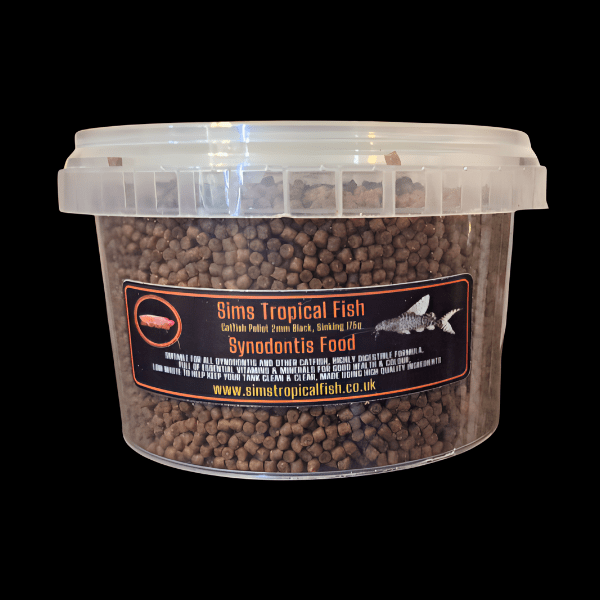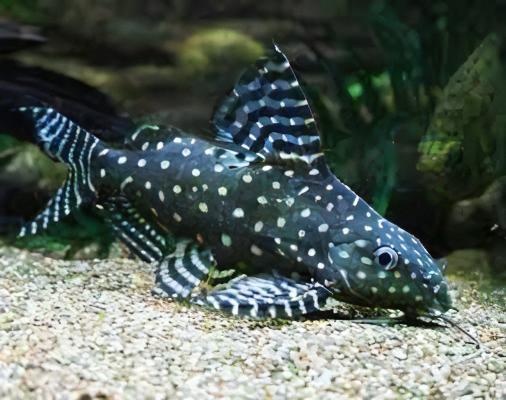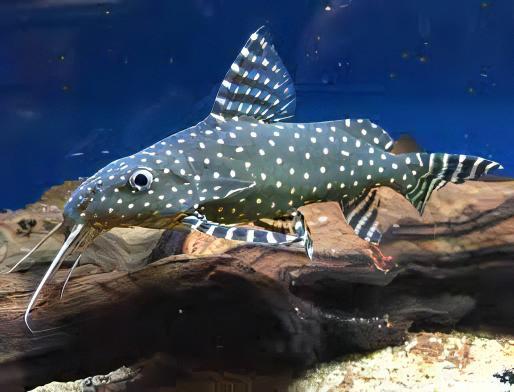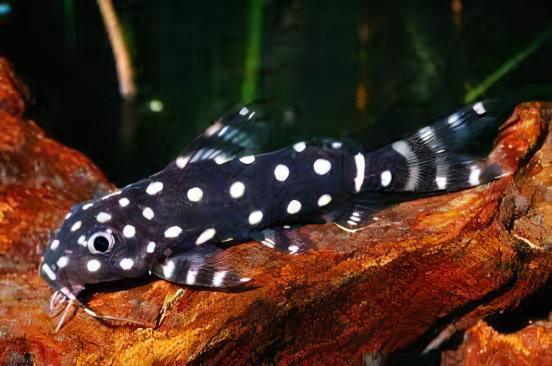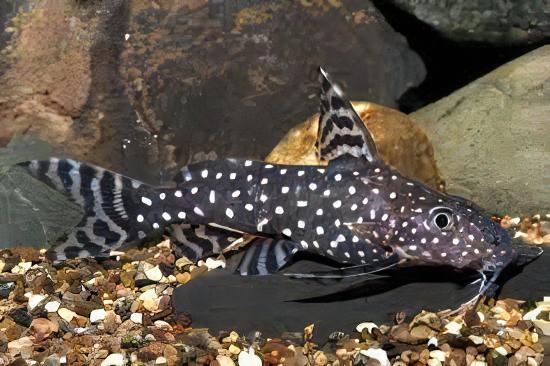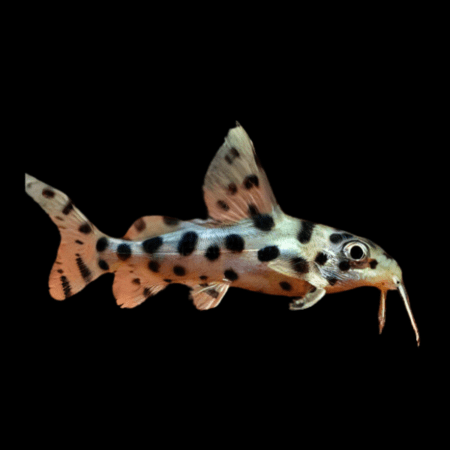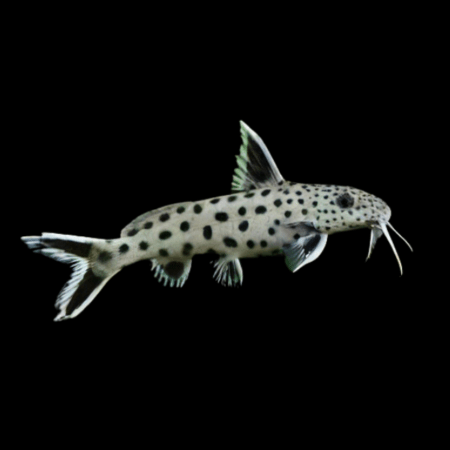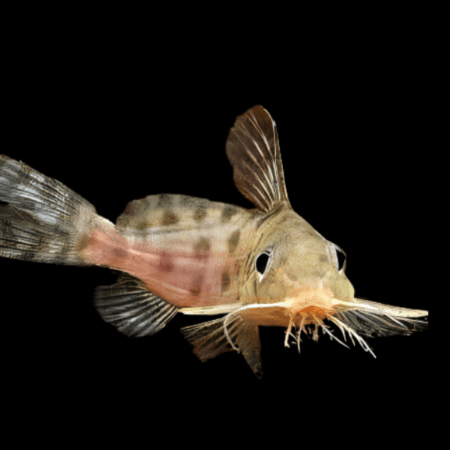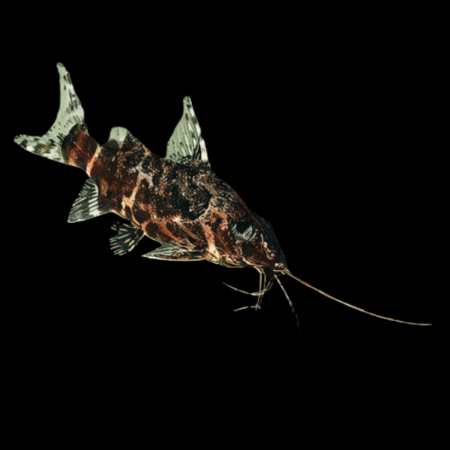Description
Angel Catfish Synodontis Angelicus
Overview
| Synonyms | Synodontis angelica, S. angelicus zonatus, S. tholloni, S. werneri |
| Distribution | Cameroon, Congo, and Democratic Republic of the Congo. |
| Maximum Size | 30cm+ (11.8″+) |
| Temperature | 24-28°C |
| Water Parameters | Will acclimatise to a wide range of conditions. pH: 6.0-8.0, dH: up to 20 degrees. |
| Compatibility | Community with no small fish |
| Lighting | Dim (can be brighter if diffused by plants). |
| Sexual Dimorphism | Mature females tend to appear much fuller bodied than the males. Experts may be able to sex the fish by examining the genital papillae (known as venting). |
| Feeding | Catfish pellets, granules, flake and frozen foods |
Description
Care
The Polka Dot Catfish is known from the Congo River basin, with exception of the Zambian Congo and the central forest. It is present in Pool Malebo (Stanley Pool) and also the drainages of the Kasai and the Ubangi. This is a large species of Synodontis which requires a spacious aquarium with a soft sandy substrate in order to protect the long sensory barbels. It should be decorated with a good amount of bogwood, rocky caves/PVC tubes, and robust planting to provide shady areas/visual barriers, but you should also ensure that a roomy swimming space is left along the front of the tank. External canister filtration is recommended, as these fish are voracious eaters and can produce a fair amount of waste. The water should be well-oxygenated with a moderate current, and frequent partial water changes are a must to help keep nitrate to a minimum. Polka Dot Catfish are most comfortable in aquaria with subdued lighting, and the use of blue-moon type illumination is highly recommended so that you may observe a few hours of the nightly goings-on in an aquarium containing these catfish. Ensure that heaters are covered with heater guards to prevent these catfish from being burned when looking for dark crevices to rest against. As it matures, S. angelicus can become somewhat quarrelsome towards conspecifics and closely related fish, so is usually best kept singly unless the aquarium is vast and there are a multitude of visual barriers. Companions should be peaceful and larger than 5cm (2″) in length (otherwise they may be predated upon); good tankmates could include medium-large sized barbs and characins, adult rainbowfish, gouramis, large peaceable cichlids, or Loricariids. Although most Polka Dot Catfish top out around the 30cm (12″) mark, a 55cm (22″) wild specimen has been recorded. May also be seen on sale as Angel Squeaker.
Feeding
Omnivorous. Offer a variety meaty frozen foods such as bloodworm, white mosquito larvae, vitamin-enriched brineshrimp, Mysis shrimp etc., along with some sinking catfish pellets/tablets/granules. Be sure to offer some vegetable matter such as cucumber, courgette, and shelled peas, along with occasional algae wafers. These are greedy fish, and are a little susceptible to bloating so take care not to overfeed, and go easy on the amount of dried foods given – avoiding all floating foods.
Breeding
This species has not been bred in the home aquarium.
